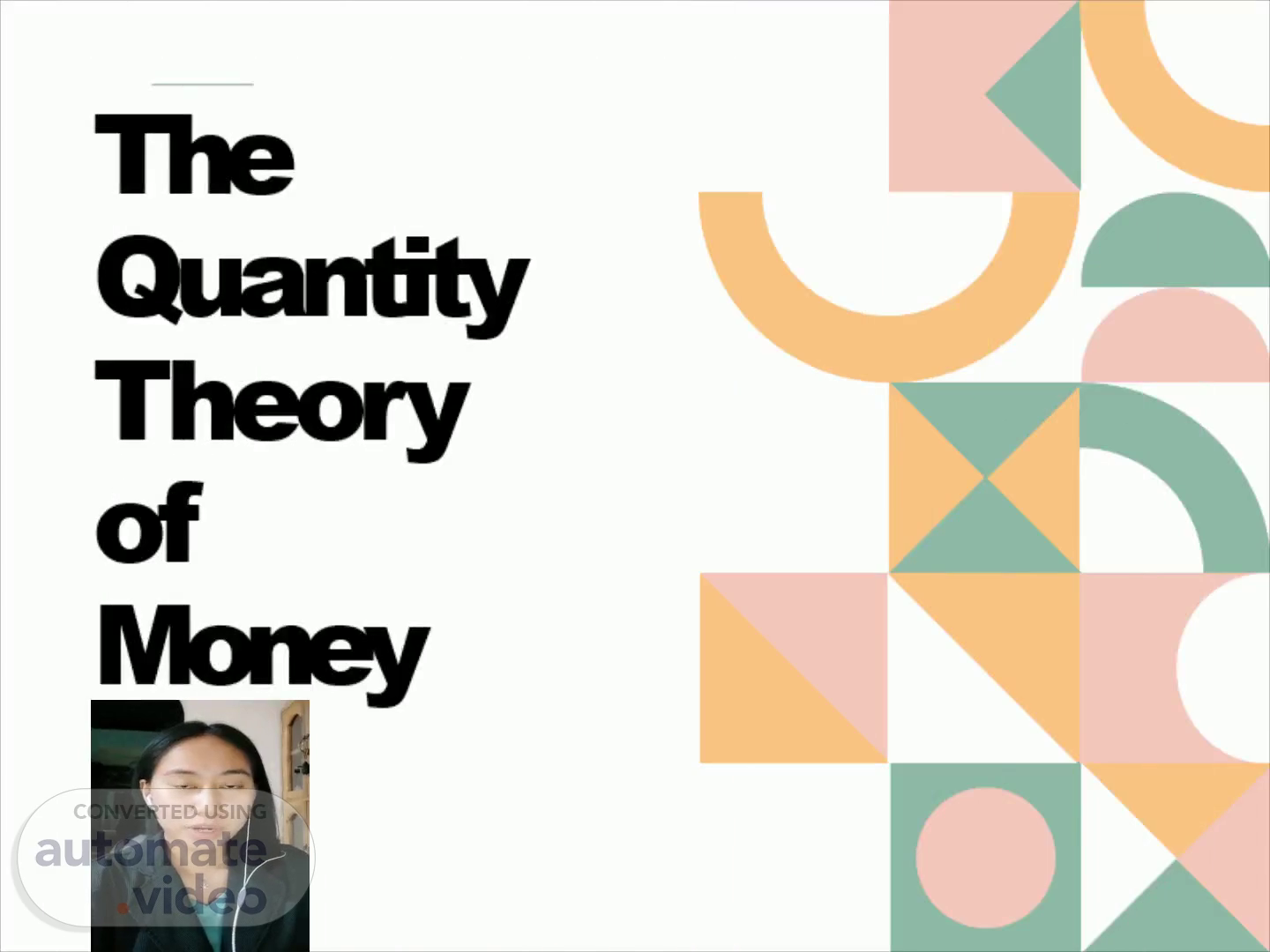
PowerPoint Presentation
Scene 1 (0s)
The Quantity Theory of Money.
Scene 2 (15s)
What is the Quantity Theory of Money?. The quantity theory of money likewise argues that the amount of money in an economy has a significant impact on the degree of economic activity in that economy. The worth of money is defined by the quantity of money accessible in an economy, according to one of these assumptions. An increase in the money supply also causes the rate of inflation to rise, an increase in the money supply leads in a fall in the value of money..
Scene 3 (1m 10s)
Who formulated the Quantity Theory of Money?. This argument was first proposed by Nicolaus Copernicus , a Polish mathematician, in 1517..
Scene 4 (2m 34s)
Understanding the Quantity Theory of Money. The most prevalent variant, known as "neo-quantity theory" or "Fisherian theory," claims that changes in the money supply and the overall price level follow a mechanical and fixed proportionate connection..
Scene 5 (3m 3s)
Irving Fisher equation calculation: > M x V = P x T Where: M = money supply V = velocity of money P = average price level T = volume of transactions in the economy The quantity theory of money, in general, describes how increases in the quantity of money tend to cause inflation and vice versa..
Scene 6 (3m 56s)
E c o n o m i s t s a r g u e o v er h o w. fast and proportionately prices shift after a change in money supply, as well as how stable V and T are in relation to time and M. Nonetheless, it relies on assumptions that other economists have questioned in order to achieve its simplicity, such as the money supply's neutrality and transmission mechanism's concentration on aggregate and average variables, the variables' independence, and V's stability..
Scene 7 (4m 44s)
Competing Quantity Theories. M o n et a r i s t s.
Scene 8 (7m 54s)
The quantity theory of money is a framework for analyzing price changes in relation to a country's money supply. The same dynamics that affect the supply and demand of any commodity also affect the supply and demand of money: an increase in money supply, ceteris paribus, lowers the marginal value of money, lowering the purchasing power of one unit of currency..
Scene 9 (8m 50s)
THANK YOU FOR LISTENING!.